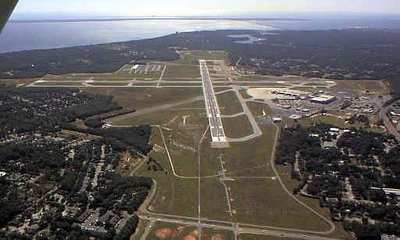Relatively Small Investments Could Yield Big Local Returns
If Congress were to include the aviation sector in its economic
stimulus packages, more than 40,000 high-paying jobs would be
created, aviation safety would be improved, and there would be
positive effects for the environment, according to a coalition of
aviation organizations.

The group of 12, including the Aircraft Owners and Pilots
Association, told Senate and House leaders that the industry's
proposals would, "not only achieve short term economic stimulus
goals, but would also lead to long-term efficiencies and economic
growth."
The proposals also would improve environmental stewardship.
"Very few government investments have the potential to positively
influence two policy objectives at the same time. This is an
investment we cannot afford to postpone," the aviation industry
said in a December 10 letter to Speaker of the House Nancy Pelosi
(D-CA), Senate Majority Leader Harry Reid (D-NV), Senate Minority
Leader Mitch McConnell (R-KY), and House Minority Leader John
Boehner (R-OH).
 "Investing in the aviation
infrastructure will put people to work," said AOPA President-elect
Craig Fuller (right). "There are hundreds of relatively low-cost
projects pending at community airports across the country, ready to
go. Investing in them could immediately help local communities, and
encourage additional economic investment.
"Investing in the aviation
infrastructure will put people to work," said AOPA President-elect
Craig Fuller (right). "There are hundreds of relatively low-cost
projects pending at community airports across the country, ready to
go. Investing in them could immediately help local communities, and
encourage additional economic investment.
"The group proposals included in the letter incorporate many of
the ideas that AOPA discussed last week in a private meeting with
President-elect Barack Obama's transportation planning transition
team," Fuller concluded.
In addition to AOPA, the co-signers include: the Aerospace
Industries Association; the Air Transport Association; the Airport
Consultants Council; Airports Council International-North America;
the American Association of Airport Executives; the Cargo Airline
Association; the General Aviation Manufacturers Association; the
National Air Carrier Association; the National Business Aviation
Association; the National Association of State Aviation Officials;
and the Regional Airline Association.
Included in the industry proposals were more funds for airport
construction and incentives to aircraft owners and airlines to
install equipment to take full advantage of the NextGen air traffic
control system. The group proposed some $3 billion be spent on
NextGen infrastructure, which would reduce airline delays, improve
aviation safety, and reduce emissions. Included in the proposal is
some $2.5 billion to support aircraft equipage, including ADS-B
(automatic dependent surveillance-broadcast) transceivers. That
would "accelerate many of the economic and environmental
benefits."
"Approximately 20,000 aircraft could be equipped with this
investment, generating high-paying green jobs in the high-tech
fields of civil aviation manufacturing, flight operations,
maintenance, and environment," the letter noted.
The aviation organizations proposed that the current Airport
Improvement Program receive an additional $1 billion in funding.
There are more than 5,000 public-use airports in the United States,
but only about 500 have commercial service. General aviation
airports are the transportation life-links for the majority of
America's communities.
"There are improvement projects that would increase the utility
and safety of these vital airports that could go to contract within
30 days if the money were available," said Fuller. The aviation
groups predicated that this proposed infrastructure funding could
create some 35,000 jobs.
Also proposed were changes in the tax code to make airport bonds
more attractive to investors, providing more money for
construction. The group also wants other changes that would help
keep aircraft manufacturing production lines moving and encourage
new research and development in the aviation industry.
While the aviation industry is feeling the current economic pain
like everyone else, "all forecasts point to robust growth in the
civil aviation sector in the coming years," the group said.

"Investment in our aviation infrastructure will pay dividends
for generations," said Fuller.
The aviation industry directly or indirectly generates more than
10 million jobs and $1.2 trillion in annual economic activity,
representing some 5.6 percent of the US Gross Domestic Product.
 ANN's Daily Aero-Term (04.20.24): Light Gun
ANN's Daily Aero-Term (04.20.24): Light Gun Aero-News: Quote of the Day (04.20.24)
Aero-News: Quote of the Day (04.20.24) ANN's Daily Aero-Linx (04.21.24)
ANN's Daily Aero-Linx (04.21.24) Aero-News: Quote of the Day (04.21.24)
Aero-News: Quote of the Day (04.21.24) ANN's Daily Aero-Term (04.21.24): Aircraft Conflict
ANN's Daily Aero-Term (04.21.24): Aircraft Conflict





